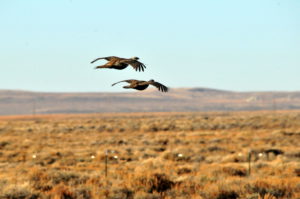For Immediate Release: February 6, 2023
Media Contacts:
Patrick Kelly, Western Watersheds Project, 208-576-4314, patrick@westernwatersheds.org
Suzanne Asha Stone, International Wildlife Coexistence Network, 208-861-5177, suzanne@wildlifecoexistence.
Derek Goldman, Endangered Species Coalition, (406) 370-6491, dgoldman@endangered.org
Andrea Zaccardi, Center for Biological Diversity, 303-854-7748, azaccardi@biologicaldiversity.
Wolf-killing policies hasten need for federal ESA protection
BOISE, Ida. – The Idaho Department of Fish & Game released a draft management plan to drastically reduce the state’s wolf population through trapping, liberalized hunting regulations, and a state-funded bounty system that pays private contractors for every wolf killed. Over the next six years, the Department aims to cut the state wolf population by 60 percent, down from the current state estimate of 1,337 animals to around 500.
“By authorizing the rapid slaughter of 60% of Idaho’s wolves, this plan would violently destabilize wolf packs across the state,” said Patrick Kelly, Idaho Director of Western Watersheds Project. “While the plan is a clear attempt by Idaho Fish and Game to dodge a listing under the Endangered Species Act, its reliance on faulty population estimates and its lack of meaningful provisions for the long term viability of wolves in Idaho only reinforces the need for federal action.”
“Scientists criticize Idaho’s methods of counting wolves as unreliable and likely to overestimate the population,” said Suzanne Asha Stone, longterm Idaho wolf advocate and director of the International Wildlife Coexistence Network. “Idaho also greatly exaggerates the impacts wolves have on livestock and on elk and deer to justify killing wolves. Killing puppies in dens for a bounty and allowing wolves to be killed 365 days of the year is not science-based wildlife management. It is persecution at its ugly core. Idaho has proven that it cannot be trusted to responsibly manage wolves.”
Conservation groups are awaiting the overdue federal decision on whether to relist wolves nationwide under the Endangered Species Act. The decision was due in July 2022, and groups have already put the Fish and Wildlife Service on notice of their intent to sue if a decision is not made soon. While the Service delays, wolves will continue to be killed at an accelerated pace with the help of night vision goggles, snowmobiles, and strangulation snares – all courtesy of Idaho’s recently loosened wolf hunting and trapping regulations.
“The restoration of gray wolves in the Northern Rockies has been one of the great American conservation success stories,” said Derek Goldman, Northern Rockies Representative for the Endangered Species Coalition. “But increased wolf-killing policies enacted by Idaho and Montana are threatening to undo this remarkable wildlife conservation achievement.”
“I’m disappointed that Idaho’s new wolf management plan only further cements its short-sighted goal of increasing hunting and trapping of wolves statewide,” said Andrea Zaccardi, legal director of the Center for Biological Diversity’s carnivore conservation program. “This is just one more example highlighting why states can’t be trusted to manage wolves. The Fish and Wildlife Service must act quickly to return federal protections.”
The new wolf plan also provides additional concessions to livestock interests in Idaho. In a vaguely worded provision granting “extended private kill authorization permits” to ranchers who hold grazing leases on public lands, the state will further expand options for lethal removal of wolf packs at the behest of the livestock industry. “We are concerned that this expanded authority will give ranchers carte blanche to kill wolves, even on public lands.” said Patrick Kelly with Western Watersheds Project. “This is yet another example of Idaho deferring to a small minority of livestock producers at the expense of wildlife and the public interest.”






